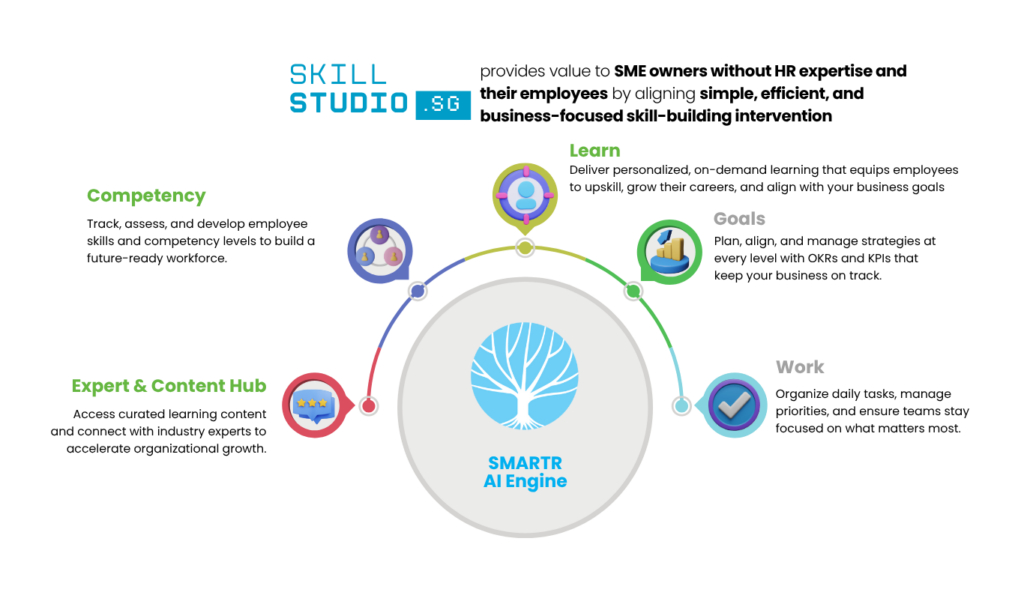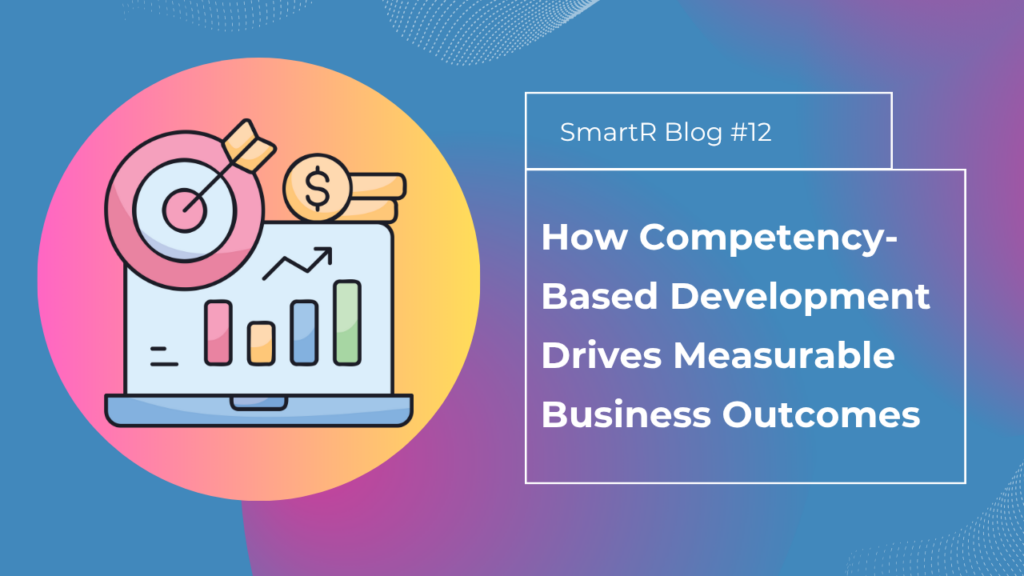Everyday, businesses are advancing quickly and there is an urgent need to develop your employee’s competencies.
HR and L&D leaders are under immense pressure and are expected to deliver development programs that would lead to real performance improvements amongst employees. Traditional training won’t cut it, as it treats learning as a chore instead of a strategic lever for business growth.
In order to align employee’s development with business goals, competency-based development should be every organization’s priority. Competency-based development would provide businesses with a competency framework and conduct regular skill gap analysis, delivering targeted learning through a competency-based LMS.
Let’s dive right into what competency-based development really means and why it would drive measurable business outcomes.
1. What Is Competency-Based Development?
Competency-based development is the practice of defining the skills, behaviors, and capabilities needed for success in each role, then using those competencies to guide:
- Learning programs
- Performance evaluations
- Career paths
- Talent decisions
Start asking “What competencies do we need to achieve business goals and how do we build them?” instead of “What training do we have?”
2. Why Traditional Learning Falls Short
Many organizations still rely on static training catalogs and one-size-fits-all programs. The problem?
- Employees complete training but don’t apply it
- Managers struggle to see progress
- HR can’t measure impact on performance
- Skill gaps remain hidden or unresolved
Organizations should be designing learning according to their goals and desired outcomes instead of allowing a generic learning plan to lead the outcome.
3. The Power of a Competency Framework
A well-designed competency framework is the foundation of any organization. It defines:
- What success looks like in each role
- The behaviors and skills required
- Levels of proficiency (beginner to expert)
- How performance is measured
This clarity brings consistency across hiring, development and promotion. It also helps employees understand exactly what they need to work on.
4. Skill Gap Analysis: Turning Insight Into Action
Once competencies are defined, the next step is identifying where employees stand.
A skill gap analysis allows organisations to:
- Assess employees based on clear criteria
- Compare current vs. required competencies
- Prioritize development efforts
- Make data-driven decisions for learning, staffing, and succession
This is where many HR leaders start to see the value as the insights will reveal where development investment will have the most business impact.
5. The Role of a Competency-Based LMS / Platform
Even with the right framework and skill gap data, execution can be difficult without the right technology. A competency-based LMS or talent platform connects all the pieces by allowing you to:
- Map learning content to competencies
- Automatically assign development paths based on gaps
- Track progress and proficiency over time
- Integrate learning with performance reviews
- Report on improvements at both individual and organizational levels
Platforms like SmartR LMS + SmartR Competency make it possible to move from theory to scalable, trackable, data-driven development.

Business Outcomes You Can Expect
When competency-based development is implemented well, organizations see tangible results:
- Faster Time to Productivity: Targeted learning helps new hires and internal movers reach full performance faster.
- Higher Employee Performance: Development is linked directly to the skills that matter most.
- Better Internal Mobility & Succession: Clear competency data enables smarter promotions and career pathways.
- Reduced Turnover: Employees stay longer when they see growth opportunities and fair development.
- Stronger Alignment With Strategy: Learning investments support business goals—not random training topics.
- Measurable ROI
With data from your LMS, you can track improvements in performance, engagement, and costs.
How to Get Started
Here’s a simple framework HR and L&D leaders can follow:
Step 1: Define Core Competencies
Identify the skills and behaviors needed for current and future success.
Step 2: Assess Current Capabilities
Use assessments, manager ratings, or 360° feedback.
Step 3: Conduct Skill Gap Analysis
Identify the most critical gaps to address first.
Step 4: Build Targeted Learning Paths
Align development activities with specific competencies.
Step 5: Use a Competency-Based LMS
Deliver training, track growth, and collect data automatically.
Step 6: Measure & Adjust
Review impact, update the framework, and continuously improve.
Competency-Based Development Is the Future
Competency-based development should be an essential part of every organization. It is a strategic way to build a future-ready workforce that is skilled and aligned.
With a clear competency framework, regular skill gap analysis, and the support of a competency-based LMS, HR and L&D leaders can finally connect learning to real business outcomes.
Want to See It in Action?
SmartR combines LMS + Competency in one integrated platform to help you:
✅ Build and manage competency frameworks
✅ Identify and close skill gaps
✅ Deliver personalized learning paths
✅ Track progress and performance in real time
👉 Book a free demo and see how competency-based development can drive results in your organization.

